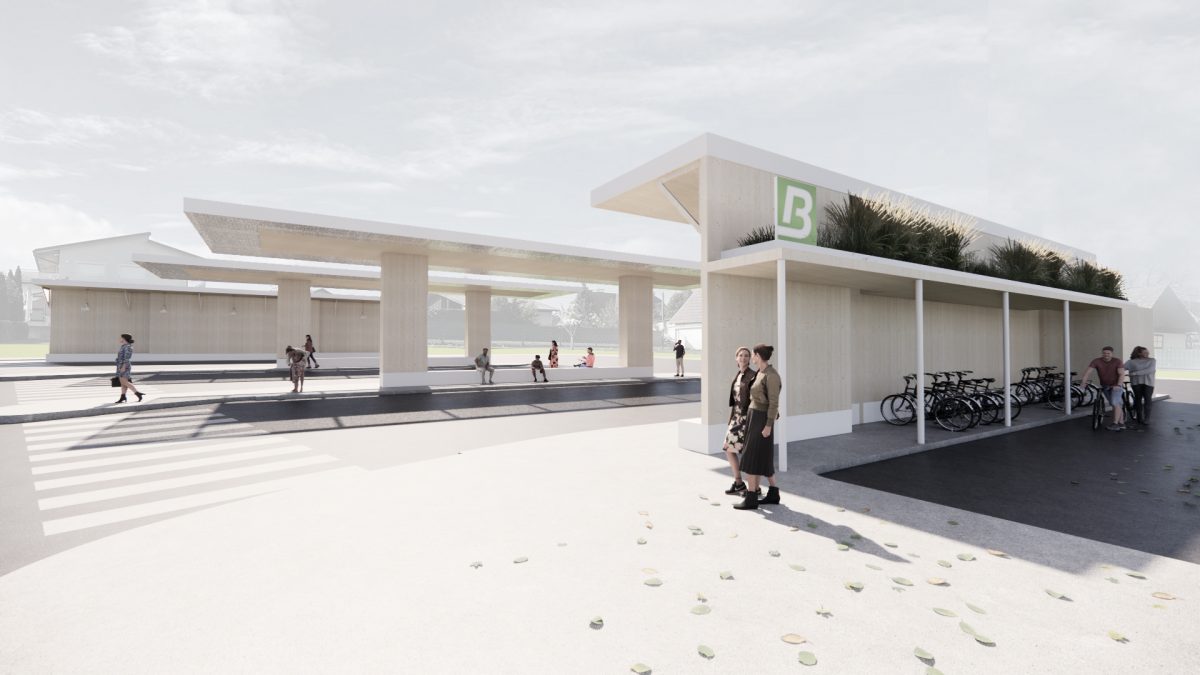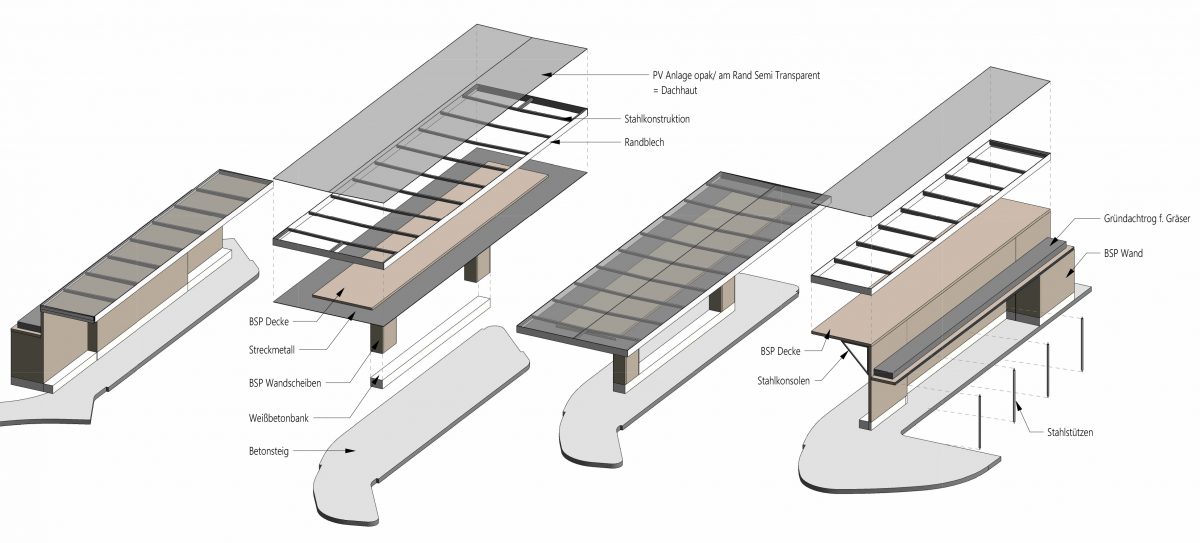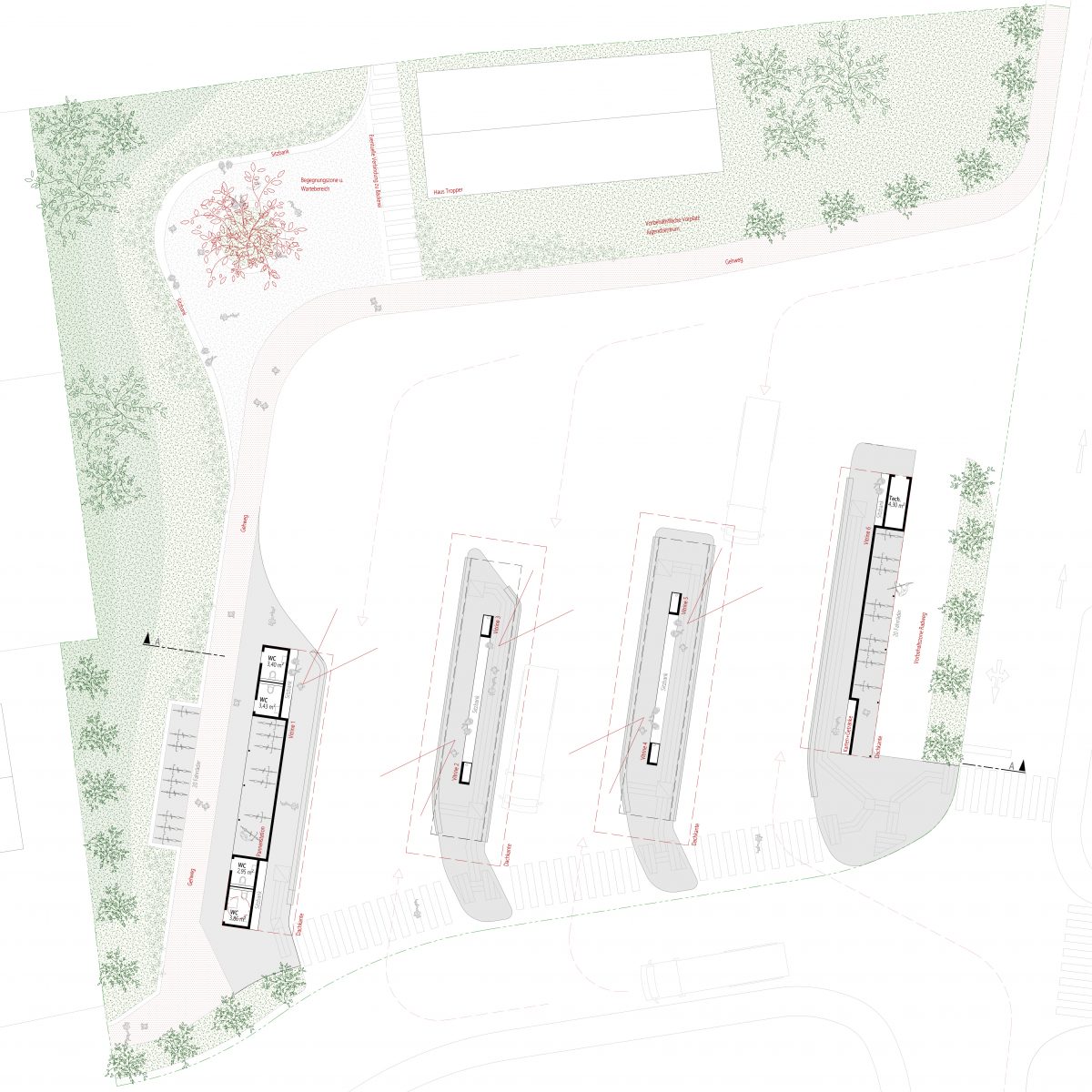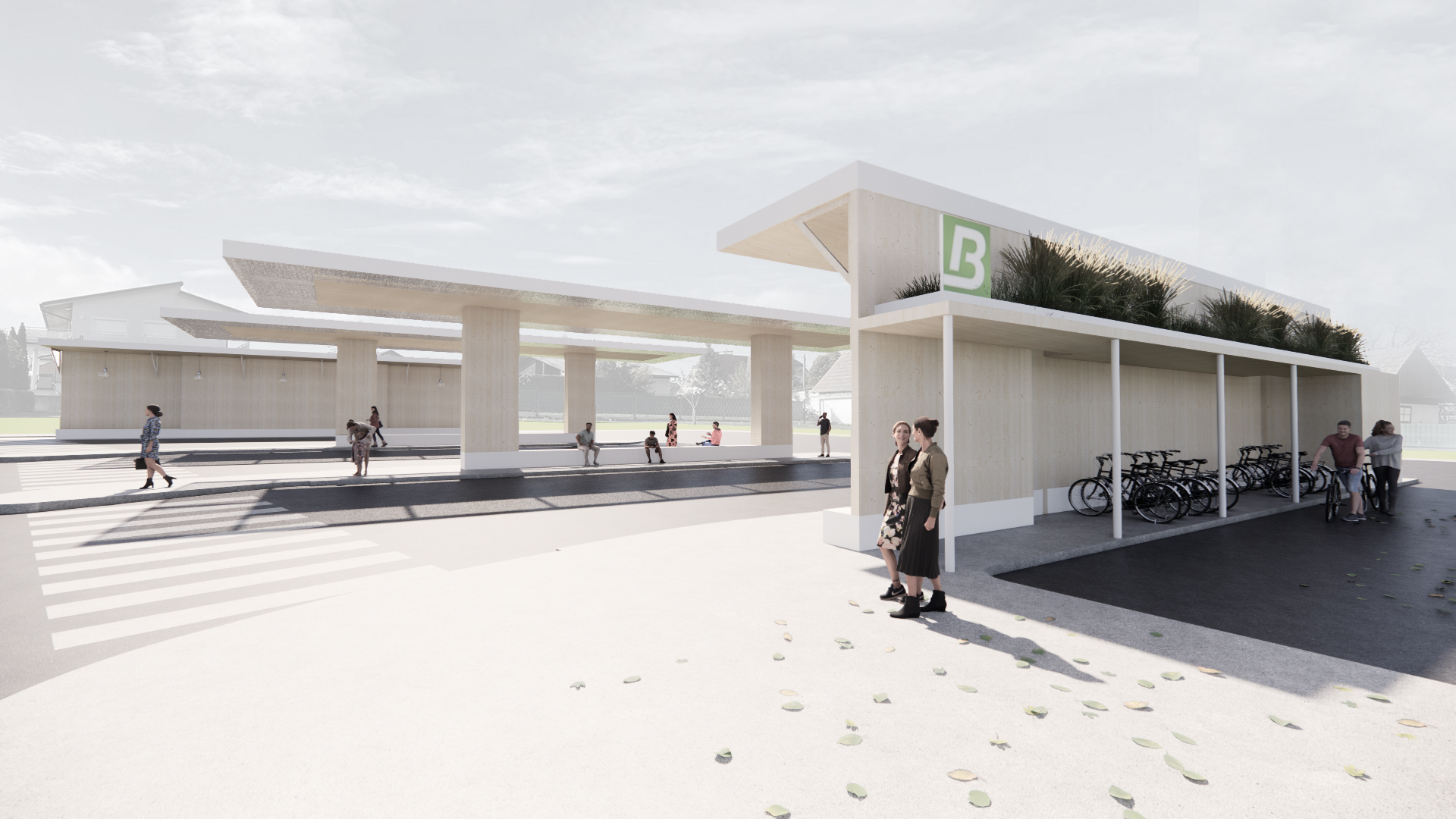Quality before quantity.
The project follows strict principles of economy and scale in the urban context. The decision to cover a smaller area allows for a high quality elaboration. Attention to detail is as important to the design as energetic symbioses, simplicity and the use of ecologically acceptable materials. For example, the partially semi-transparent PV system serves not only to generate electricity but also as a roof covering, which saves costs and resources. A wood/steel hybrid construction is proposed. Solid wood walls bear cross-laminated timber slabs. The wood elements are supported by sand-blasted concrete plinths, and the roof edge finishes consist of coated metal rims. Infrastructure and drainage is managed internally through the wall structures. The four buildings structure the new ensemble of the bus station. They follow the slightly ascending topography and are thus somewhat offset in height. Seating facilities and essential infrastructure are integrated into the building structure. Monitors and display cases are integrated into the walls.








